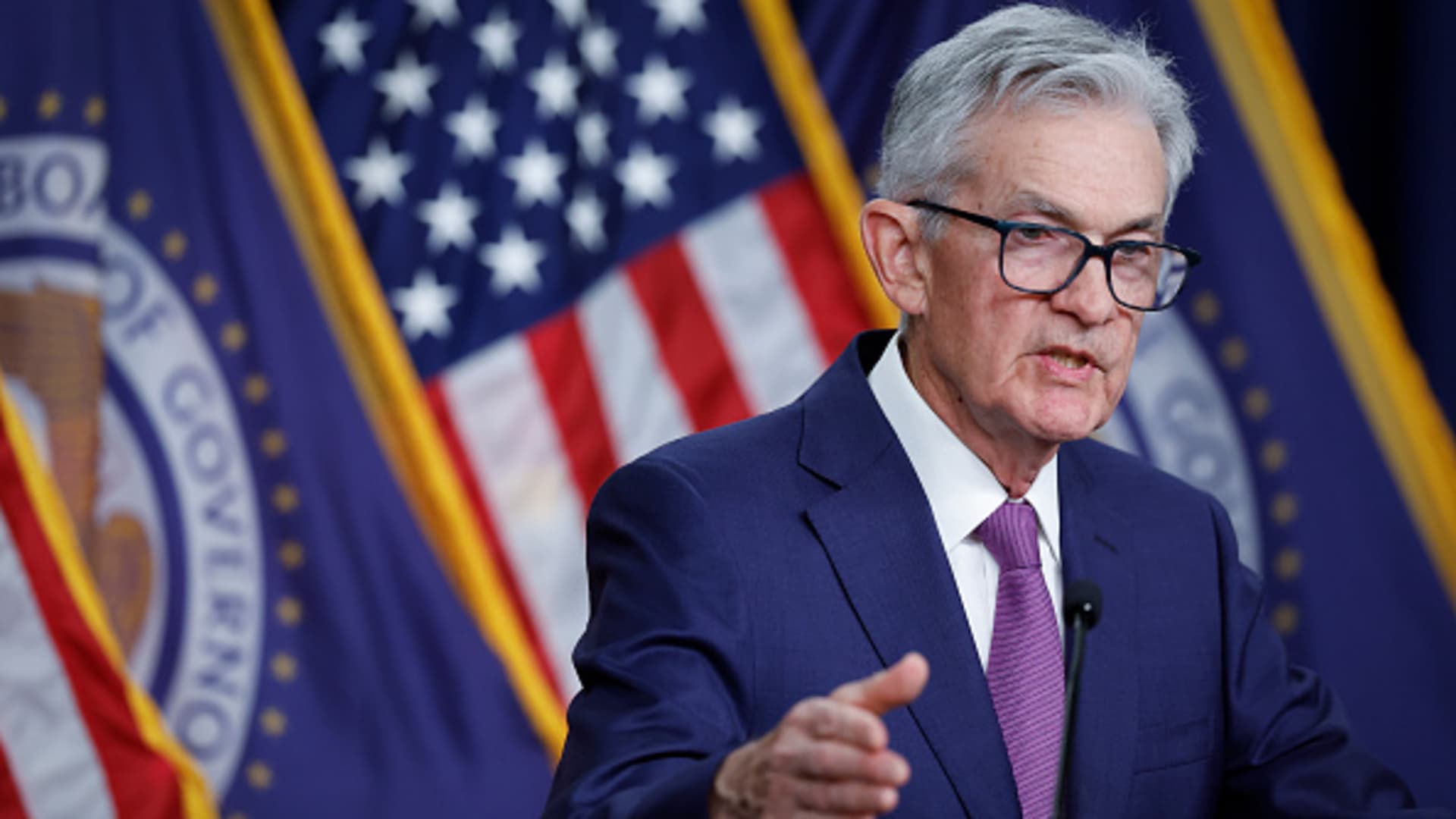Though it took some pretty explicit talk from Fed Chair Jerome Powell, the market finally seems to have gotten the message that a March rate cut isn’t in the cards. Powell’s statement in his Wednesday news conference that “I don’t think it’s likely” a cut will come next month finally shifted the focus further down the road. Traders have moved out the probability of a March easing from around 90% in recent weeks to a coin-flip in the days leading up to this week’s Federal Open Market Committee meeting to about a 1-in-3 chance Thursday. That’s not to say the market still doesn’t think the committee will cut rates sharply this year, but any dialing back now probably won’t come quite as soon as expected. “The January FOMC meeting solidified the Fed’s dovish pivot,” Deutsche Bank chief U.S. economist Matthew Luzzetti said in a client note. “Continued progress on disinflation could still lead to a cut at that meeting. But [Wednesday’s] meeting raised the bar for that outcome. While our baseline remains that the first cut will come in June, we see risks skewed towards an earlier reduction in May.” The policy pivot began in December, when committee members accelerated their anticipated pace of rate cuts this year to three from the previous two. Though it was a small tweak, it helped reflect sentiment that the Fed not only likely was done hiking but also was ready to start taking its foot off the brakes. However, the timing and pace of the cuts remains in flux. Powell’s remarks went a long way to extinguishing an earlier and faster pace than expected, leading Wednesday to a sharp market selloff that sent the Dow Jones Industrial Average down more than 300 points. Recalibrating expectations However, markets recouped some of those losses Thursday as investors weighed the impact of the Fed’s move and its policy intentions. For the most part, Wall Street commentary showed an expectation that the Fed will cut at least four times this year, likely beginning in either May or June. The Fed voted Wednesday to hold its key funds rate in a target range of 5.25%-5.5%. “By the June meeting, we forecast job gains will be around replacement rates and core inflation will have shown broad slowing that convinces FOMC members progress is sustainable,” Morgan Stanley chief U.S. economist Ellen Zentner wrote. “As inflation falls, real rates become more restrictive, and we think gaining consensus to cut will be easier.” Morgan Stanley forecasts the first of four cuts coming in June, followed by even more aggressive easing in 2025 featuring 200 basis points in reductions, the equivalent of a quarter percentage point move at every meeting. Elsewhere, Goldman Sachs sees an initial reduction in May, followed by consecutive cuts in June, July and September, a November pause and a final pruning in December. Most of Wall Street expects the FOMC to skip November, as the meeting falls the same week as the U.S. presidential election. More loosening Goldman figured that the decision to signal no hike in March resulted from debate among members over when to start. Powell noted that “almost every participant on the committee does believe that it would be appropriate to reduce rates” this year. “We think that the best explanation for [Wednesday’s] meeting is that FOMC participants with a range of different views have compromised on likely starting a bit later, probably in May instead of March,” Goldman economist David Mericle wrote. However, Goldman differs from Morgan Stanley in that it expects just three cuts in 2025. Wall Street also is beginning to handicap the start of the Fed’s balance sheet reduction. Powell indicated that the committee in March will discuss in earnest when it should alter its process of allowing up to $95 billion in maturing bond proceeds to roll off each month. Quantitative tightening has shrunk the Fed’s holdings by nearly $1.3 trillion since June 2022, but the balance sheet is still at $7.7 trillion. For instance, Bank of America economist Michael Gapen expects the QT “slowdown” to start in May, with the monthly allowance to move lower gradually before stopping altogether at the end of 2024. Barclays economist Marc Giannoni predicted the process could halt as early as October. —CNBC’s Michael Bloom contributed reporting.
























































![Key Metrics for Social Media Marketing [Infographic] Key Metrics for Social Media Marketing [Infographic]](https://www.socialmediatoday.com/imgproxy/nP1lliSbrTbUmhFV6RdAz9qJZFvsstq3IG6orLUMMls/g:ce/rs:fit:770:435/bG9jYWw6Ly8vZGl2ZWltYWdlL3NvY2lhbF9tZWRpYV9yb2lfaW5vZ3JhcGhpYzIucG5n.webp)


















